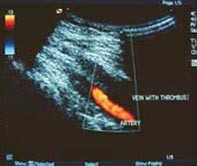Peer Reviewed
Feature Article Cardiovascular medicine
Clinical approach to the patient with peripheral oedema
Abstract
Peripheral oedema is a nonspecific clinical sign commonly seen in a wide range of diseases. A systematic approach allows accurate diagnosis and appropriate treatment of the causes of peripheral oedema.
Key Points
- Causes of peripheral oedema range from the benign to the potentially life-threatening.
- The distribution of oedema is an important clue to the underlying cause.
- Unilateral leg swelling usually suggests a local disease process, whereas bilateral peripheral oedema is often due to a systemic cause.
- Patients with acute unilateral leg oedema should be evaluated for deep vein thrombosis.
- Diagnostic tests for peripheral oedema aim to rule out significant systemic disease such as heart, liver or kidney failure.
- Drug-related oedema is relatively common with the use of calcium channel blockers and NSAIDs. Glitazones can cause fluid retention and may precipitate heart failure.
- Poor compliance with medications and fluid restriction are common causes of hospital admissions of patients with heart failure.
Purchase the PDF version of this article
Already a subscriber? Login here.

